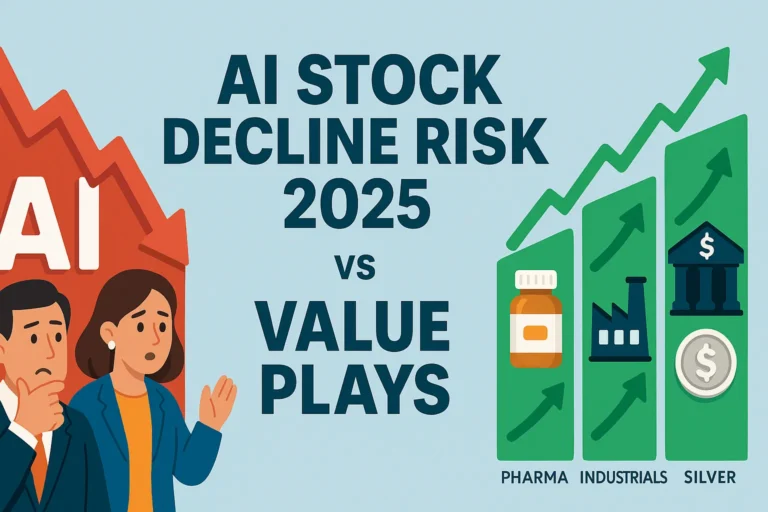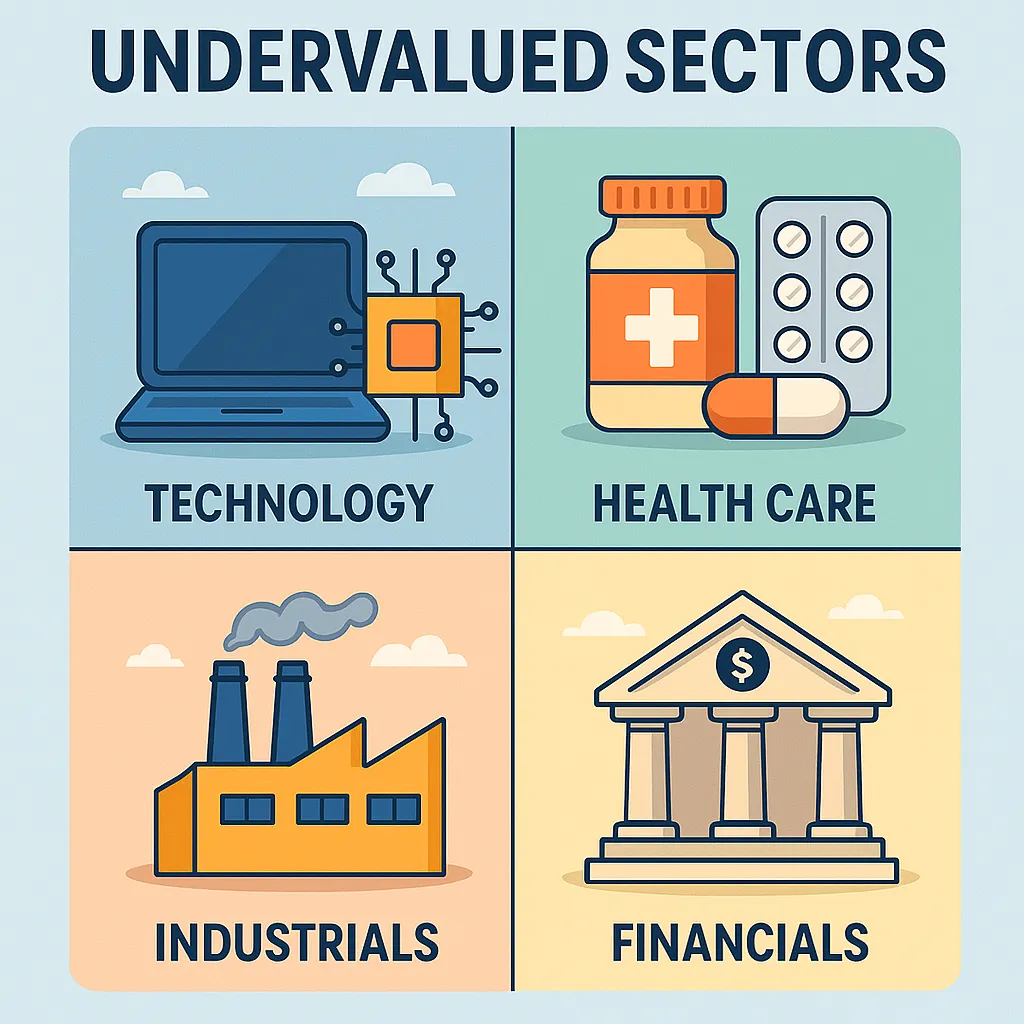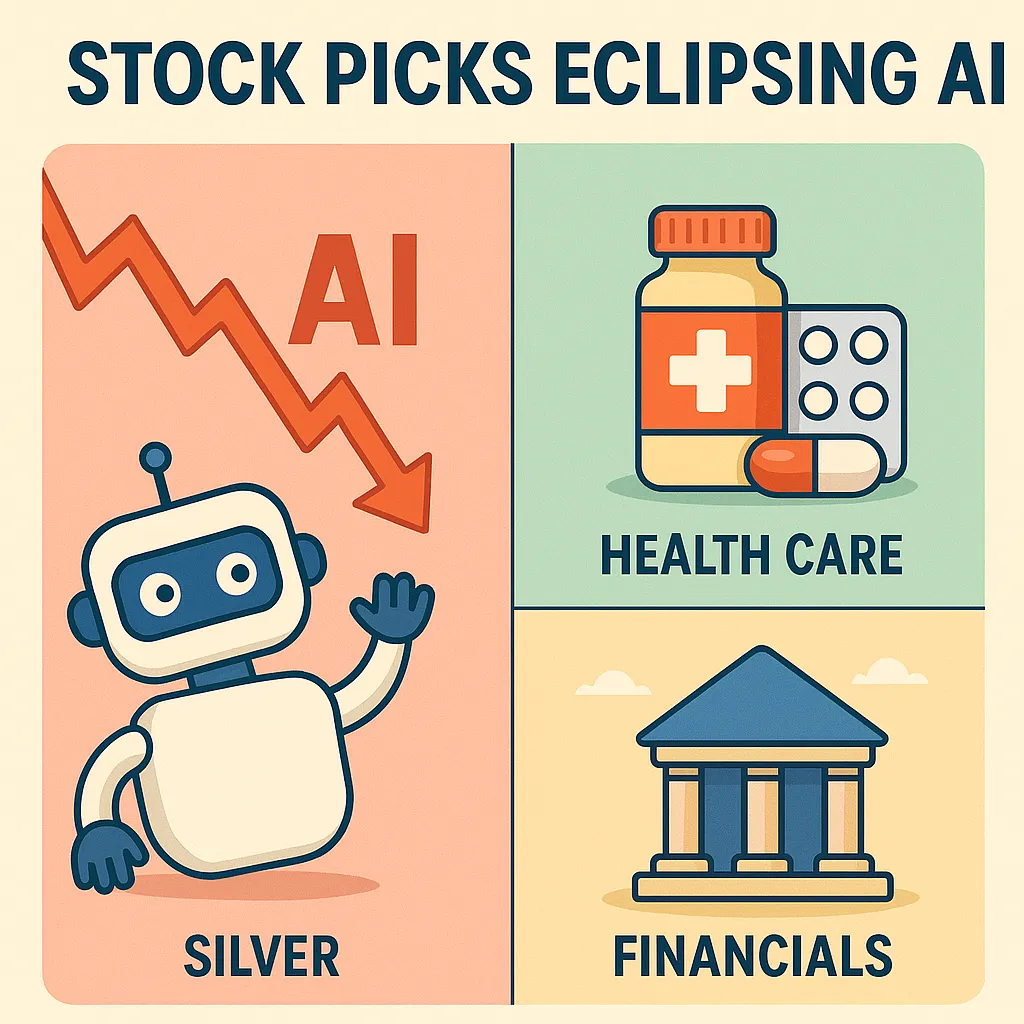
6 Surprising Value Plays Dethroning AI Stock Decline Risk in 2025
6 Surprising Value Plays Dethroning AI stock decline risk in 2025
Last updated: September 17, 2025 • 14–18 min read
⚡ Quick Take (open me)
Headlines obsess over AI stock decline risk, but under the surface a handful of unfashionable sectors are setting up for multiple expansion, dividend durability, and cash-flow surprises. In this trend brief we map six contrarian, high-quality value plays dethroning AI leadership—spanning pharma stocks to watch, industrials value investing, and financials contrarian plays—with screenable metrics, risk checks, and entry frameworks.
After two years of mega-cap AI dominance, investors are finally asking a hard question: if multiple compression hits the leaders, where does the next leg of returns come from? Rather than timing the top, this guide outlines six **undervalued sectors stock picks** frameworks that can compound even if growth multiples cool. We’ll define what makes a value setup durable in 2025, how to avoid value traps, and when to rotate back toward AI once breadth improves.
- 6 evidence-based value playbooks with metrics (FCF yield, ROIC trend, pricing power, buyback pace).
- How to pair sector rotations with risk budgeting and drawdown control.
- Watchlist criteria for pharma stocks to watch, capex cycles in industrials, and capital return in financials.
- Entry/exit rules to sidestep value traps while AI leadership consolidates.
This piece doesn’t predict a crash; it shows how to participate in broadening markets without overpaying for growth narratives. We’ll keep the focus practical—screenable signals, repeatable checklists, and portfolio rules that de-risk exposure while the market reassesses AI stock decline risk.
Up first: a simple 2025 value framework—what separates genuine value from a low-quality trap—before we dive into six sector playbooks.
📊 The 2025 Value Framework: What Beats Hype
Before diving into sector-specific opportunities, we need a simple lens for spotting genuine value setups in the shadow of AI stock decline risk. History shows that every cycle of technological enthusiasm—from dot-coms in 2000 to EV hype in 2021— creates froth that eventually cools. When the leaders retrace, capital rotates toward durable free-cash-flow, balance-sheet strength, and reliable dividends. That rotation doesn’t happen by accident; it follows patterns.
Our framework for 2025 boils down to three factors:
- Cash-flow resiliency: Positive and growing free cash flow even in low-growth scenarios.
- Balance-sheet strength: Debt/EBITDA ratios below 2x, strong interest coverage, and liquidity buffers.
- Capital return consistency: Dividend payout ratios under 60% and buyback programs that actually retire shares.
Companies scoring high across these measures tend to outperform during growth retrenchments. This is the essence of undervalued sectors stock picks: names that don’t need narrative hype to compound.
💊 Play #1 – Defensive Pharma: Cash-rich Pipelines
The pharmaceutical sector is often overlooked in periods of tech dominance, but it offers exactly the traits value investors need in 2025: dependable cash flows, inelastic demand, and balance sheets that weather any downturn. As the market wrestles with AI stock decline risk, investors rediscover that health care demand is structurally resilient.
Why Pharma Stocks Stand Out
- Patent cliffs: While seen as a risk, they often spark acquisitions, creating shareholder value.
- R&D productivity: Pipelines in oncology, rare diseases, and immunology are increasingly efficient thanks to AI-driven discovery.
- Dividend durability: Top pharma companies have 20+ year histories of raising dividends, making them core defensive holdings.
In a penny stock screener review style analysis, pharma doesn’t offer the excitement of daily 10% swings. But that’s precisely the point. The sector offers stability when the broader market questions its AI bets. For long-term investors, these are pharma stocks to watch as valuation multiples remain well below tech leaders.

Case Example: Dividend Aristocrat Pharma
Consider a global pharma leader with $20B in annual free cash flow and a dividend payout under 50%. Its pipeline includes next-generation oncology treatments, while cash reserves exceed short-term debt by 3x. Even if AI valuations compress, this company’s steady growth plus 3.5% dividend yield can outperform broad market indices. This is the essence of industrials value investing—not chasing hype but anchoring portfolios with steady growers.
For deeper strategies on combining defensive sectors with tactical growth, see our guide on Swing Trading Books, where we cover hybrid strategies that blend defensive anchors with breakout trades.
As we transition into Play #2, keep in mind: value plays thrive not because they’re glamorous, but because they deliver cash when growth falters. Next, we’ll explore industrials value investing—companies benefiting from capex cycles and reshoring trends.
🏭 Play #2 – Industrials: Capex Upcycles & Backlog Quality
If the story of the last five years was about AI-driven growth multiples, the next chapter may belong to industrials value investing. As governments around the world roll out infrastructure packages and companies re-shore supply chains, the industrials sector is benefiting from a once-in-a-decade capex upcycle. This trend dovetails perfectly with the cooling of AI stock decline risk: investors fleeing compressed multiples often rotate into durable revenue streams supported by real-world demand.
Why Industrials Offer a Value Edge
- Infrastructure tailwinds: U.S. and global stimulus programs boost orders in machinery, construction, and transportation equipment.
- Reshoring and supply security: Firms are diversifying away from overseas dependence, fueling capital investment.
- Backlog visibility: Many industrial companies hold multi-year backlogs, offering a cushion against cyclical slowdowns.
- Dividend growth: Industrial stalwarts often combine growth optionality with a steady record of payouts.
These characteristics make the sector one of the most compelling undervalued sectors stock picks heading into 2025. While AI leaders wrestle with margin compression, industrial names quietly compound with tangible order books and pricing power.

Case Example: Global Machinery Leader
Consider a leading machinery company trading at 14x forward earnings with a 2.7% dividend yield. Its backlog covers 20 months of revenue, capex trends remain strong, and management guides toward sustained buybacks. Compared with volatile AI names, this represents the steady compounding that defines value plays dethroning AI.
For a primer on balancing cyclical sectors with stable allocations, see our Day Trading Mentor resource, where we outline frameworks for rotating capital between high-growth themes and durable value.
With industrials setting the stage for broad-based value leadership, we next explore financials contrarian plays: how banks and insurers can turn rate risk into capital-return opportunities.
🏦 Play #3 – Financials: Capital Return & Contrarian Stability
Few sectors are as misunderstood during periods of technological exuberance as financials. While the spotlight stays on growth multiples, banks and insurers quietly compound through capital return. When headlines flash warnings about AI stock decline risk, contrarian investors often rotate into financials contrarian plays that generate steady income and buybacks.
Why Financials Matter in 2025
- Net interest margin floors: Even as rates normalize, lending spreads stabilize, supporting earnings.
- Capital return: Many banks return 70–90% of net income via dividends and buybacks.
- Insurance float strength: Insurers deploy massive cash balances, compounding through premiums plus investment returns.
- Valuation discounts: Financials trade at forward P/E multiples nearly half those of AI-driven tech names.
These qualities make them a cornerstone of undervalued sectors stock picks—especially when investors need ballast against volatility. As AI multiples compress, the stability of financial cash flows becomes a safe harbor.

Case Example: Large-Cap Bank
Take a large-cap U.S. bank trading at 1.1x tangible book, returning 85% of earnings through dividends and buybacks. While AI names wrestle with volatile earnings revisions, this bank compounds steadily. Investors treating financials as dead money overlook their resilience—and that’s what defines value plays dethroning AI.
For additional contrarian case studies, explore our guide on Penny Stocks Watch List, where we demonstrate how contrarian setups emerge when consensus overlooks cash flow quality.
With financials anchoring portfolios, our next focus shifts to energy, materials, and silver—a sector blend where discipline, free cash flow, and commodity scarcity combine to build compelling value setups.
🛒 Play #5 – Staples with Pricing Power
Consumer staples may look boring compared to AI, but they excel at one thing: passing on costs without losing customers. In periods of uncertainty and AI stock decline risk, staples with pricing power quietly beat expectations and protect portfolios.
- Sticky demand: Households rarely cut back on food, beverages, or hygiene products, even during recessions.
- Pricing leverage: Firms that increase prices while retaining market share expand margins sustainably.
- Dividend consistency: Many consumer staples are dividend aristocrats, raising payouts yearly for decades.

Investors treating staples as “low growth” miss the point: resilience and dividend compounding are exactly what value plays dethroning AI look like during sector rotations.
📈 Play #6 – Small/Mid Value with Buyback Flywheels
Beyond the big sectors, pockets of opportunity exist in small and mid-cap stocks with aggressive buyback programs. These firms often trade at steep discounts yet shrink their share counts consistently, creating internal compounding engines.
Why They Matter
- Capital efficiency: Management teams allocating surplus cash to buybacks signal discipline.
- Valuation gap: Many small caps trade at single-digit P/Es, even with steady earnings growth.
- Compounding math: Reducing share count by 3–5% annually amplifies EPS growth and shareholder value.
When paired with other undervalued sectors stock picks, these names provide torque without requiring AI-like multiples.
⚖️ Risk Management: When AI Leadership Resumes
Rotating into value doesn’t mean abandoning growth forever. The right mindset is cyclical. When breadth broadens and AI valuations reset to reasonable levels, leadership may resume. The key is to maintain a barbell portfolio: durable value on one side, selective growth exposure on the other.
Signs AI leadership is resuming include: multiple compression stabilizing, revenue beats despite macro headwinds, and renewed institutional flows. Balancing exposure helps you benefit from both the defensive power of value and the eventual reacceleration of growth.
❓ FAQs on AI Stock Decline Risk & Value Plays
1. What does AI stock decline risk mean?
It refers to the possibility that AI-focused companies see valuation compression or earnings disappointments that reduce stock prices.
2. Why rotate into value plays now?
Because defensive sectors often outperform when growth multiples reset. Value provides cash flow and stability.
3. Are pharma stocks to watch in 2025?
Yes. Pharma pipelines, dividends, and balance sheets offer dependable value plays.
4. How do industrials provide stability?
Reshoring, infrastructure demand, and multi-year backlogs give industrials strong visibility in earnings.
5. Should I avoid AI stocks entirely?
No. A balanced portfolio keeps some exposure to growth while layering in defensive and contrarian value positions.
✅ Conclusion & Next Steps
The narrative of 2025 won’t just be about AI stock decline risk. It will also be about the six surprising value plays that quietly dethrone hype-driven multiples. From pharma stocks to watch to industrials value investing, financials contrarian plays, and silver’s scarcity appeal, the market is offering opportunities for those willing to look past the headlines.
By layering these value plays dethroning AI into your portfolio, you reduce volatility, enhance dividends, and create pathways to compound steadily. When AI leadership eventually resumes, you’ll be ready—with a stronger, more diversified base.
🚀 Build Your Edge Today
Learn more in our resources: Day Trading Mentor and Stock Market for Dummies PDF. Position your portfolio for resilience and growth in 2025.